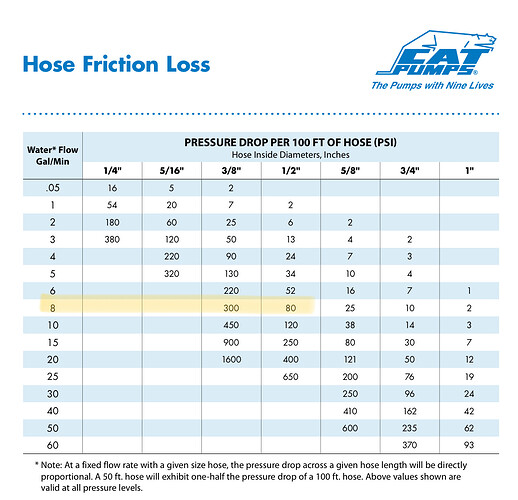It’s better to keep customers out of the repair shops by maintaining cool pump temperatures, minimize engine stress and back siphoning corrosive chemical by forwarding the education directly from our pump manufacturers.
Firefighters are among those that are very familiar with hose friction loss. At 8 gpm, a minimum of 300 psi is lost through every 100 feet of 3/8” ID hose. Add extra fittings, quick connects, ball valves, a convenient 3/8” bypass kit, a hose reel swivel, different types of guns and the pressure loss number adds up.
If you want to move as fast as you can with your larger diameter surface cleaner, minimize the pressure losses and upsize the hoses on the suction side and discharge side of the pump.
The pump manufacturers tell us not to use hard pipes when plumbing the suction side of pressure washer pumps when gravity feeding. Use non-collapsible suction hose because the hose must flex. Don’t use elbows whenever possible to prevent the possibility of the Reynold’s effect. The more turbulent the water entering the pump manifold, the greater the chance of permanent damage from cavitation.
If you find yourself replacing unloaders too frequently and your injector is mounted on the outlet of your unloader, install a jump hose between the unloader and chemical injector. A short 3-4’, two wire jump hose is worth the cost and dependability of another unloader. If you have a spring or lock up type unloader, screw in the hose to the outlet of the unloader. Get rid of the extra quick connect set. Mounting chemical injectors at the unloader or pump manufacturers producing integrated unloaders/chemical injector manifolds keeps pressure washer supply houses in business.


